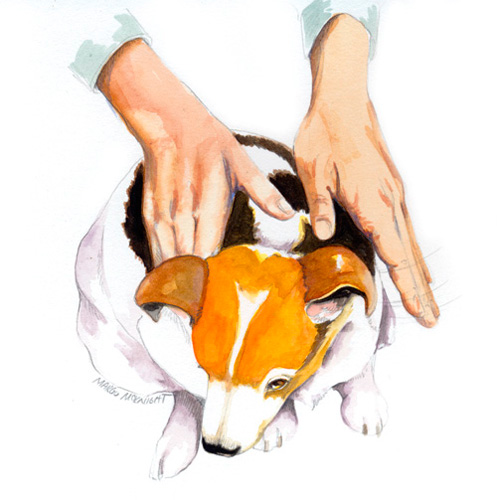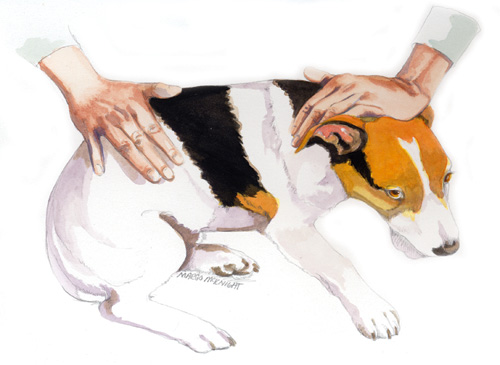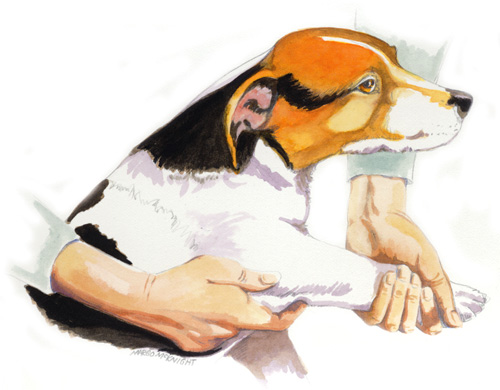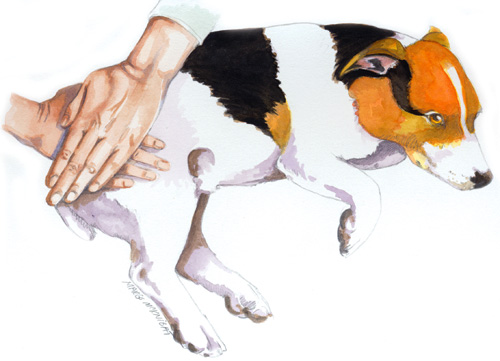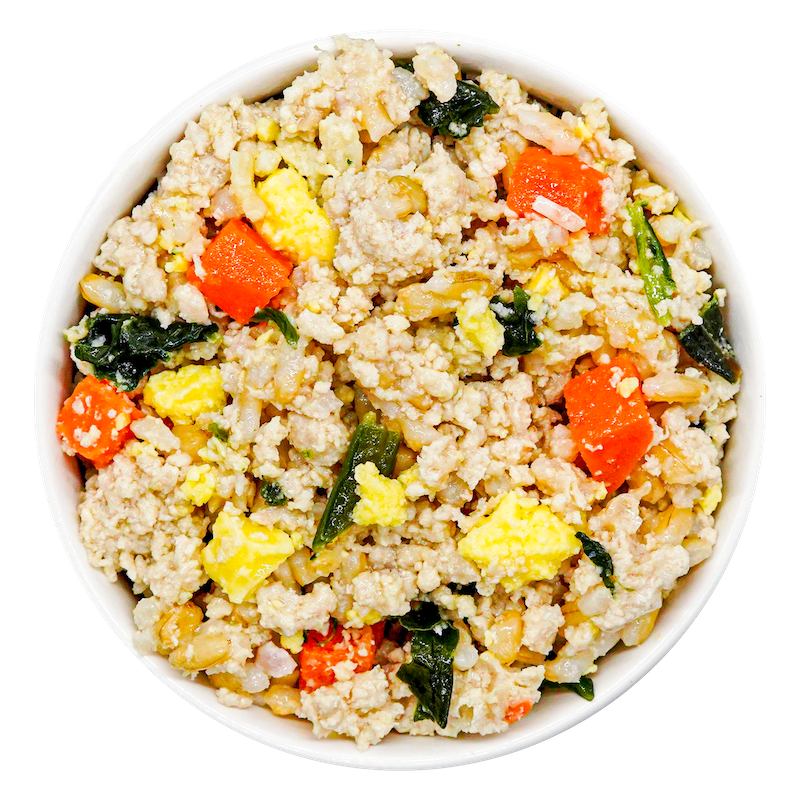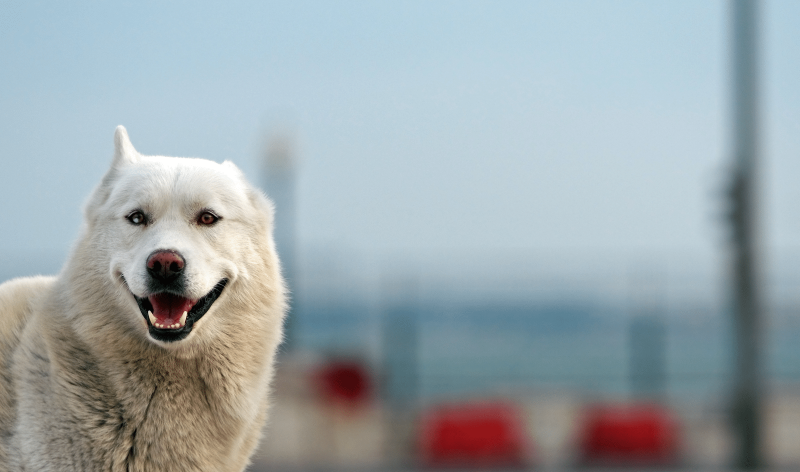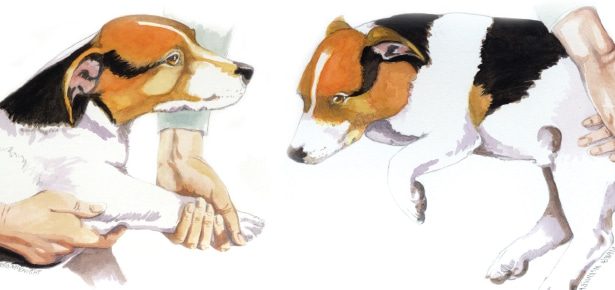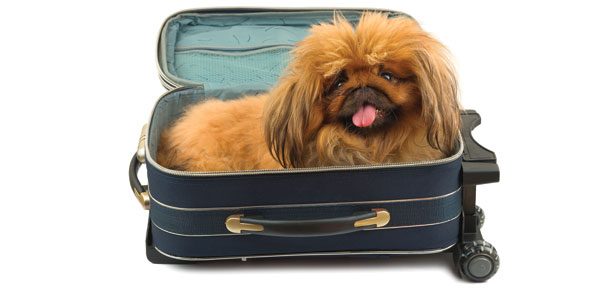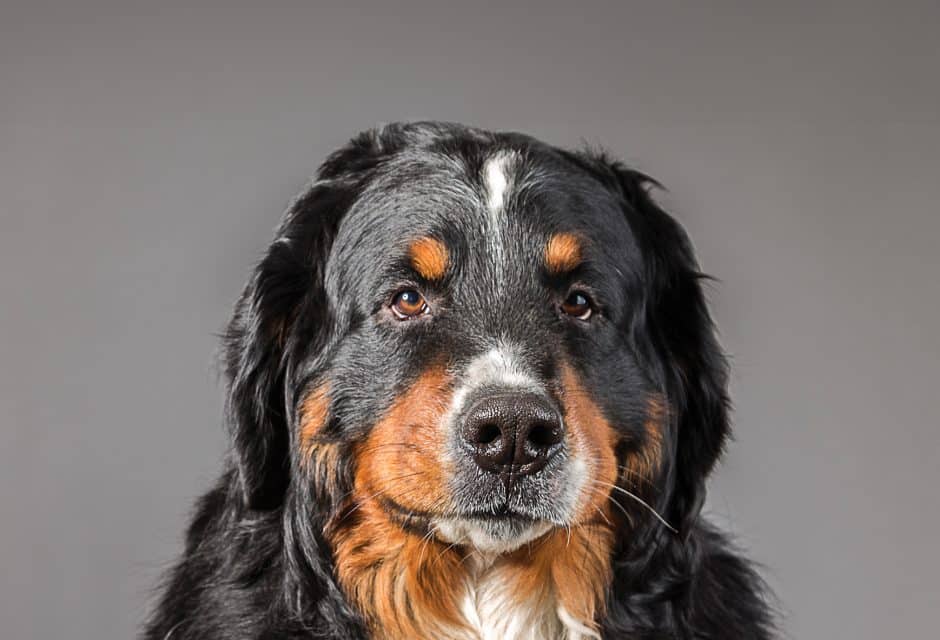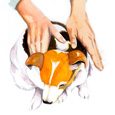
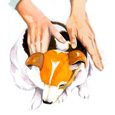
How To Massage Your Dog
4 dog massage techniques to help your pup rest, relax, and rejuvenate
Ahhh—yeah—that’s the right spot, how to massage your dog! What’s that? No, it doesn’t hurt, it’s divine. Don’t stop now… Who doesn’t love a massage? You can’t beat something that feels so good and is good for you, too. Dog massage lowers blood pressure and reduces stress for both the giver and receiver and takes only minutes a day. Better yet, learning how to give your dog a massage is easy. And if you believe in karmic retribution, just think of all those massages waiting for you down the road!
Daily Dog Massage
In just ten minutes a day, you can give your dog a “maintenance” massage. Use a flat palm to slowly touch all the parts of your dog’s body. Really focus on what you are feeling and pay attention to all the layers, from hair through skin, fat, muscle, and down to bone. Meanwhile, Liverlover is basking in the attention and loving the extra “petting.” However, there is more to these massages than just quality time together. After a few days, you will have a clear picture of what is normal for your dog’s body. In future sessions, you will be quick to notice any differences in surface temperature, sensitivity to touch, localized swelling or muscle tension, poor coat quality or tight skin. Left undetected, these things can lead to problems requiring medical care, medications, or even surgery. Knowing what feels normal for your dog can also help you provide better information for your veterinarian, trainer, or massage practitioner. This is one way that regular massage can add to the length and quality of your pet’s life.
How to Massage Your Nervous Dog To Calm Them
Oh, oh. The distant sound of thunder is rolling through your neighbourhood. Your dog begins to whine, roll his eyes, and pant. He dives under your bed. Is there anything you can do to reduce his stress? Massage may be the answer. Massage therapists use a stroke similar to petting to relax the nervous system. Lightly rest the flat palm of your hand on top of your dog’s head or neck. Make long, sweeping passes along the length of the spine and down the tail. Repeat this several times slowly. You can gradually increase your pressure if your dog likes it. Do not press straight down on the lower part of the back. To finish, allow one hand to rest at the base of your pet’s head and the other hand to rest over the area of the pelvis (the high point over your dog’s hips). These two areas correspond to the part of the spinal cord that controls the rest and relaxation responses of the body (for example, sleep, digestion, and tissue repair). This technique is useful any time your dog is nervous or fearful, such as during nail trimming or vaccinations, or when he is hyperactive or restless.
Warm-Up Massage for Active Dogs
If you work out or play a sport, you’ve likely been told many a time that warming up your body is a vital part of your fitness routine. Active dogs that compete, run, hike with their owners, or just play hard also deserve a good warm-up, and it may even prevent injury. Start with several minutes of petting strokes over your dog’s entire body. Briskly rub the large muscles (neck, shoulders, buttocks, and thighs) with the heel of your hand. Gently lift and squeeze the muscles. The technique is a lot like kneading bread dough. Wrap your fingers around each lower leg and squeeze gently. Relax your grip and move up Warm-up for active dogs the leg gradually, squeezing as you go. Finish with more petting over the entire body to stimulate the nerves.
Relieving Joint Stiffness and Soreness With Dog Massage
The weekend was great—on Saturday, Tex ran with the gang for hours at the dog park. Then, on Sunday, you two hiked all day. But Monday doesn’t look so good. Tex is limping from couch to water dish, and declining your invitations to play. Ouch! Recent exertion, aging, or inactivity can lead to soreness and stiffness in joints and muscles. To help, start by petting the area around the joint to warm the tissue. Then place your hand(s) over the area and apply gentle compressions over the area. You can use your breathing or count slowly to establish a rhythm as you press and release the muscles. The pumping motion moves fluids through the muscles and takes tension off the tendons surrounding the joint. Never use sudden or direct force over a bone. Finish with more petting over the area to soothe the nerves. Keep in mind that regular massage throughout the life of your pet may help prevent the stiffness and pain that contributes to arthritis. Readers should note that knowing how to massage your dog is not a substitute for veterinary care. Severe conditions require diagnosis and treatment by your veterinarian.
……………………………………………………………………………………………
Fresh-made food. We tried it. Your dog will LOVE this food. Feeding our dogs healthy, balanced meals is extremely important for their health and wellness but busy schedules can prevent us from making them ourselves. Try Nom Nom, delivering fresh, pre-portioned, nutritious meals to fit any dog's diet.—Ed.
……………………………………………………………………………………………
Lola Michelin has been massaging animals for over 18 years. She learned her trade while working as a veterinarian technician, a zookeeper, an animal trainer, and massage practitioner. She founded the Northwest School of Animal Massage and teaches animal massage around the world. For more information on animal massage, visit www.nwsam.com
*We promote the best information and products for our readers, and some may be affiliates of Modern Dog, which means we make a small amount when you purchase. Thank you for your support!
Join the newsletter and never miss out on dog content again!
"*" indicates required fields
By clicking the arrow, you agree to our web Terms of Use and Privacy & Cookie Policy. Easy unsubscribe links are provided in every email.
